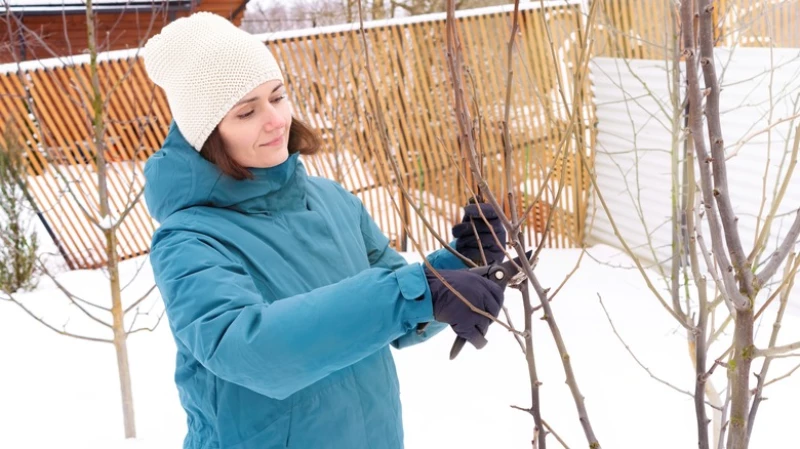Perfecting the technique isn't the only factor to consider when pruning your fruit trees. Timing is also crucial. If you prune too early, your trees may not be able to withstand the winter, leaving them vulnerable to injury if the temperature suddenly drops. On the other hand, pruning too late will divert the tree's resources to growing new leaves instead of producing fruits, which defeats the purpose of having fruit trees. The ideal time for pruning is in late winter, before the buds start to form and the trees begin to wake up from their dormant state.
Timing is Key: When to Prune Your Fruit Trees
When it comes to pruning fruit trees, timing is everything. The best time to prune depends on factors such as your location, the type of fruit tree, and your reasons for pruning.
Fruit trees come out of their dormant state and begin to grow after they have met their "chill hours" requirement. This requirement varies across different varieties, with most apple trees needing around 1,200 chill hours and most peach trees needing around 800 chill hours. These hours are fulfilled when temperatures range between 32 and 45 degrees Fahrenheit. Once this condition is met, the trees allow their previously dormant buds to develop, leading to the production of healthy fruits.
For most zones, the ideal pruning time falls between January and March. However, stone fruits like cherries and plums are an exception to this rule. They should be pruned during the summer, from May to September, to avoid contracting silver leaf, a fungal infection that causes silver discoloration of the foliage.
Winter pruning is particularly beneficial for new and bare root trees, as it stimulates vigorous growth. However, if you are simply shaping the tree or removing diseased branches, light summer trims can also be done without harm.
Winter pruning is effective because fruit trees are bare during this time. Without leaves, it is easier to see the tree's structure and identify and remove any broken, diseased, or decayed branches. Additionally, during winter, the trees transfer their carbohydrate-rich food from the leaves to the roots, so pruning does not deplete their resources. This allows them to grow new foliage and fruit in the upcoming spring season. Furthermore, pruning in winter reduces the risk of infections as pathogens are less active during this time. However, pruning too early in winter can prevent the tree from producing fruit.
Understanding Fruit Tree Pruning
Fruit trees go through three stages of acclimation to cold weather after becoming dormant. The first stage begins when the days become shorter, making the trees tolerant of a 10 to 15-degree temperature dip. Subfreezing temperatures kick off the second stage, increasing cold tolerance by another 10 degrees. It finally reaches its maximum in mid-January as the temperature approaches near zero. Pruning during any of these stages can reduce the tree's winter resilience. In other words, if the tree is not as hardy, it can easily suffer from cold and frost damage, hindering its growth. Moreover, if the tree is exposed to a warm spell in the middle of winter followed by a sudden temperature drop, it will not have enough time to reacclimate, putting it at risk of injury or death. While some believe that the impact of pruning neutralizes after two weeks, studies have shown that the effects of a November trim can persist until February.
Exceptions to the rule
While winter pruning is generally recommended, it may not be suitable for all fruit trees. For example, Apricot trees are prone to fungi infections during winter rains, so they are best pruned between August and September to minimize the risk of aggravated pruning wounds. The same principle applies to stone fruit trees. Similarly, evergreen fruit trees, such as avocado trees, are best left for spring pruning when the danger of frost damage has passed.
On the other hand, summer pruning can be beneficial for trees that are not producing fruit. Typically, the lower branches of fruit trees do not receive enough sunlight, which is necessary for fruit production. By removing a few lower branches, sunlight can reach the lower parts of the tree, promoting fruiting. Additionally, pruning lateral branches can encourage the formation of fruit-bearing buds that produce fruits over several years. It is believed that pruning stimulates the tree's growth through the release of ethylene gas. Summer pruning is particularly important for young trees, as it helps shape their growth and encourages fruit production on stronger branches.









